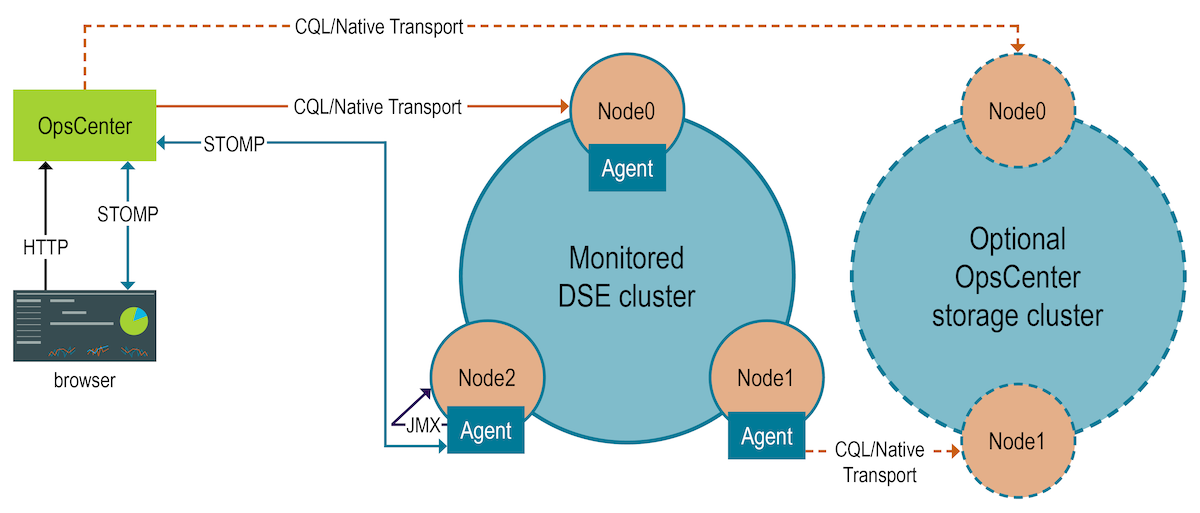DSE OpsCenter architecture overview
Basic architecture diagram and a brief explanation of connection protocols.
OpsCenter uses an architecture that employs DataStax Agents on every managed node in the cluster. DataStax Agents are necessary to perform most of the functionality within OpsCenter. When creating a new cluster with Lifecycle Manager, the DataStax Agent is automatically installed. When adding a new cluster to manage with OpsCenter, you are given the option to automatically or manually install DataStax Agents.
DataStax Enterprise (DSE) exposes a number of statistics and management operations through Java Management Extensions (JMX). The DataStax Agents use JMX to monitor and manage each node on a monitored cluster and a STOMP connection between each DataStax Agent and OpsCenter. Using JMX, OpsCenter obtains metrics from a cluster and issues various node administration commands, such as flushing SSTables or doing a repair.
OpsCenter establishes a CQL/native transport connection with each seed node included in the cluster configuration. This connection allows OpsCenter to communicate with the node, and in turn, the cluster as a whole.
DataStax recommends using a separate OpsCenter storage cluster to store data in the OpsCenter keyspace for the DSE cluster being monitored. Unless the storage cluster is also monitored by OpsCenter, there are no DataStax Agents on the separate storage cluster nodes. For more, see Storing collection data on a separate cluster.

